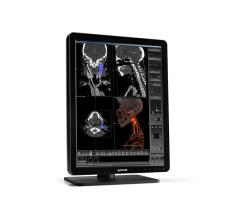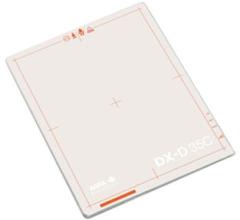July 18, 2013 — In a study of more than 2,000 adults, researchers found that two MRI (magnetic resonance imaging) measurements of the abdominal aorta — the amount of plaque in the vessel and the thickness of its wall — are associated with future cardiovascular events, such as a heart attack or stroke. Results of the study are published online in the journal Radiology.
Hologic Inc. recently expanded its array of interventional and imaging solutions for breast health with the launch of the world's first 3-D breast biopsy option. This technology was developed for the company's Affirm upright breast biopsy guidance system, which is used in conjunction with the Selenia Dimensions 2-D and 3-D mammography systems.
Elekta and Royal Philips announced that the Froedtert and The Medical College of Wisconsin Clinical Cancer Center (Milwaukee, Wis.) will join a consortium that is investigating the development of a magnetic resonance imaging (MRI) guided radiation therapy system.
Radiology departments have many different needs and face a wide variety of challenges that can impact their departments ...
July 16, 2013 — The U.S. radiation therapy market appears to be rebounding after a major decline in 2009, with radiation oncology centers budgeting more money for capital equipment purchases this year compared to four years ago, according to a new study published by IMV Medical Information Division.
The first-ever presentation at a medical conference using hologram technology instead of traditional video projection screen took place July 1 at the American Society of Echocardiography’s (ASE) 2013 scientific sessions. The innovative presentation was used to drive home the advances in technology that are going to completely reshape cardiac ultrasound and medical imaging over the next few years.
ImaCor Inc. announced the implementation of the 24/7 hTEE Clinical Support Program.
Despite decades of progress in breast imaging, one challenge continues to test even the most skilled radiologists ...
DAIC Editor Dave Fornell highlights some of the biggest trends and most innovative technology discussed during the ...
July 15, 2013 — Barco announced the launch of the premium grayscale Coronis 3MP LED and the high-bright Nio Color 3MP LED. Featuring 3MP resolution and using high-bright LED backlights, these diagnostic displays enhance radiologist productivity and performance by making subtle details more noticeable more quickly.
July 15, 2013 — More than one quarter of the children treated for headaches across a range of care settings received a computed tomography (CT) scan, possibly exposing them to unnecessary radiation and increased cancer risks, according to an article in the July edition of Pediatrics.
Bayer Radiology’s Barbara Ruhland and Thom Kinst discuss how radiology departments can address the many different ...
Often-stated assumptions that medical imaging tests are one of the factors driving health care spending increases are being undermined by a new research study showing that physicians are ordering diagnostic imaging exams on an increasingly lower percentage of their interactions with Medicare patients.
July 12, 2013 — Agfa HealthCare announced the availability of its newest digital radiography (DR) detector, the DX-D 35C, an 11x14-inch wireless panel with high spatial resolution for detail. The detector will be on display at the annual meeting of the Association for Medical Imaging Management (AHRA) July 28-31 in Minneapolis.
Biopharmaceuticals Inc. announced the first subject has been enrolled in its NAV4694 global, pivotal Phase 3 clinical trial. The trial will assess the safety and efficacy of NAV4694, an investigational positron emission tomography (PET) imaging agent, in detecting cerebral ?-amyloid in end-of-life subjects with and without the diagnosis of dementia. The study will examine the effectiveness of NAV4694 in detecting the presence or absence of ?-amyloid deposition in the brain by directly correlating the PET image findings during life with those of the brain tissue upon autopsy after death.
eHealth Saskatchewan plays a vital role in providing IT services to patients, health care providers, and partners such ...
Patients in the United States who want to communicate with healthcare providers via an online portal indicate they would eagerly embrace the ability to download and share medical images and radiology reports with their physicians, according to a study of 1,000 adults conducted by IDR Medical.
Sorna Corporation, a global leader in digital medical image and data distribution systems, announced that as a result of its settlement with RADinfo SYSTEMS, it has entered into an agreement to assume all service and support obligations for existing RADinfo CD PowerPACS customers. Cyrus Samari, Sorna’s vice president of sales and marketing, stated “This agreement benefits the CD PowerPACS customers. They will have immediate access to Sorna’s solutions to automatically share medical images and reports using any combination of CD production, cloud sharing, and Secure DICOM Share.
Sudden cardiac death (SCD) is the leading cause of death in high school-aged athletes. To determine if SCD can be prevented with a heart screening, The Christ Hospital Health Network (Cincinnati, Ohio), The University of Mississippi Medical Center and Cincinnati Children’s Hospital Medical Center partnered with USRowing and Toshiba America Medical Systems Inc. to conduct The Athlete Heart Research Study. Initial participants included volunteer high school rowers with more than two years of continuous practice who competed in the USRowing Youth National Championships, June 7 – 9, 2013 in Oak Ridge, Tenn.
The U.S. Food and Drug Administration (FDA) has cleared the Siemens Healthcare’s Mammomat T Inspiration Prime Edition, which lowers patient radiation dose up to 30 percent without compromising image quality. The Mammomat Inspiration Prime Edition lowers dose by replacing the standard scatter radiation grid with a new algorithm for progressive image reconstruction. Capable of identifying scatter-causing structures and calculating a corrected image, this new algorithm potentially enables complete use of primary radiation so physicians can achieve high-quality images using less dose.
The Society of Nuclear Medicine and Molecular Imaging (SNMMI) and the Alzheimer Association have released responses to the draft Medicare decision from the Centers for Medicare and Medicaid Services (CMS) proposing Coverage with Evidence Development for the use of beta-amyloid positron emission tomography (PET) imaging agents. Both groups expressed disappointment to the CMS decision, stating that sufficient evidence exists to support immediate coverage, which would change patient management, leading to better health outcomes for patients and assisting families making care decisions.
Researchers have announced the results of a five-year study that shows early fetal echocardiography provides reliable prenatal diagnosis of major congenital heart disease (CHD). First trimester screening looks very promising for detection of heart problems and increases the need for scheduling early and detailed cardiac evaluations.
Epsilon Imaging Inc. announced a clinical study demonstrating EchoInsight for Cardio Oncology to be a high quality, efficient application for comprehensive assessment of left ventricle (LV) function. The study, presented at the ASE 2013 Scientific Sessions in Minneapolis, Minn., further indicated EchoInsight for Cardio Oncology facilitates monitoring of patients at risk for cardiotoxicity. EchoInsight for Cardio Oncology is a vendor neutral application designed to assist clinicians in improving confidence and workflow of study interpretation and reporting when monitoring oncology patients.
A new technique for detecting cancer by imaging the consumption of sugar with magnetic resonance imaging (MRI) has been unveiled by University College London (UCL) scientists. The breakthrough could provide a safer and simpler alternative to standard radioactive techniques and enable radiologists to image tumors in greater detail.

 July 18, 2013
July 18, 2013 


















